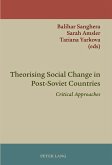Low fertility, one of the critical issues in the contemporary world, will persist in the foreseeable future. That is arguably the principal conclusion of this book. Fundamental changes in social security and health care systems, taxation schemes, and migration policies, for instance, are inevitable, unless societies are able to institute effective measures and create favorable conditions for increasing fertility. Such are the unavoidable challenges facing European and other economically advanced countries.
The present study applies the cohort analysis approach to detailed data covering over half of the 20th century for populations of 35 countries. In distinction to most previous studies, that approach is put to use not only for elucidating past trends, but also to capture salient aspects of contemporary fertility patterns. And, beyond that, it is utilized to suggest possible near-term future trends in fertility behavior.
The present study applies the cohort analysis approach to detailed data covering over half of the 20th century for populations of 35 countries. In distinction to most previous studies, that approach is put to use not only for elucidating past trends, but also to capture salient aspects of contemporary fertility patterns. And, beyond that, it is utilized to suggest possible near-term future trends in fertility behavior.
From the reviews of the first edition: "This is a tour de force in cohort fertility analysis, a deep and powerful piece of work. It is a striking demonstration of the force of really detailed empirical analysis of excellent and comprehensive data, with the data looked at from every angle and judiciously extrapolated into the future. It represents a major contribution to our understanding of contemporary low fertility in Europe and other developed nations - arguably one of the most important demographic phenomena of our times, and one whose scope and implications are not yet fully appreciated. No one could fail to appreciate these after a careful look at this study."Thomas K. Burch, University of Victoria, BC, Canada "The principal conclusion of this book is that cohort fertility throughout Europe as well as in Japan and the four overseas countries of predominantly European settlement is almost certain to remain low ... . The conclusions of the study are backed up by reference to the wide range of social, economic and cultural conditions that affect reproductive behaviour. ... The book is an important contribution to the discussion of the causes and consequences of low fertility." (Lado T. Ruzicka, Journal of Population Research, Vol. 22 (1), 2005) "This analytical study is an outcome of a long and productive collaboration of the authors ... aimed at documenting fertility changes in advanced societies. ... The text is complemented by rich documentation in the form of uniformly designed figures, tables, and appendices. ... The evaluation in the shifts in the age pattern of childbearing is particularly valuable. ... Frejka and Sardon have assembled a comprehensive and carefully presented study on cohort fertility that will become an invaluable source of information." (TomáS Sobotka, European Journal of Population, Vol. 22 (1), 2006)









